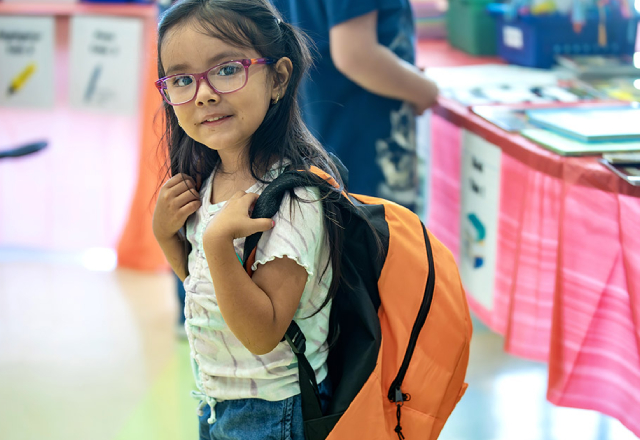Back to School: How to Pick and Wear a Backpack

It is almost time for kids to head back to school and while families are busy shopping for clothes and supplies, it’s likely they’re searching for the perfect backpack, too. Though kids and teens might be looking for a cool style or brand, how they’re made and worn is what parents should actually consider.
Ryan Fitzgerald, M.D., a fellowship-trained pediatric orthopedic surgeon with Children's Orthopaedic and Scoliosis Surgery Associates (COSSA) who treats patients at Johns Hopkins All Children's Hospital, understands parents’ concern with how heavy backpacks could be impacting their child, so he’s sharing six tips on how to pick and wear a backpack to prevent injury.
Tips on Selecting a Backpack
Look for wide shoulder straps and a padded pack.
The wider the straps, the better. A strap that clips across the chest will help spread the force/weight of the backpack across your child’s shoulders. The part of the pack that rests on your child’s back should be well padded, which provides comfort and protection from any sharp edges or objects inside the pack.
Look for lightweight, but sturdy.
Look for strong zippers and tough nylon fabrics that will resist rips and tears without adding extra weight. Reflective fabric is also a good idea for traffic safety, especially if your child will be walking, riding his or her bike, or going to and from a bus stop.
Consider wheels.
This can be a good option if a child is comfortable with a backpack on wheels, but make sure your child will use the wheels, otherwise they will add more weight to the backpack. Also, double check that the school allows this type of backpack.
How to Wear a Backpack Correctly
Wear the backpack 2 inches above the buttocks
The form of wearing a backpack is critical. The heavier the backpack, the more stress it puts on your body. Carrying the backpack too low puts more stress on the body by pulling the force further away and tiring other parts of the body. The best way to wear a backpack is 2 inches above the buttocks, which helps to evenly distribute its force through the shoulders.
Make sure your child uses both shoulder straps.
Wearing a backpack on one shoulder may strain muscles. If a child prefers a messenger-style bag, make sure they wear it across the body instead of on one shoulder.
Empty the backpack frequently.
A filled backpack shouldn’t weigh more than 10 pounds. Parents of younger students should clean out the backpack on a regular basis to see if there are unnecessary items adding to the backpack’s weight. Encourage teens to do the same. Only carry items that are required for the day, and pack heavier items at the top and toward the front.
Finally, see your doctor if your child has any back pain, and encourage your student to tell you about any numbness, tingling, or discomfort in the arms or legs. This may indicate a backpack that is too heavy or does not fit well.
Ryan Fitzgerald, M.D. is on the medical staff of Johns Hopkins All Children’s Hospital, Inc. (“JHACH”), but is an independent practitioner who is not an employee or agent of JHACH.
